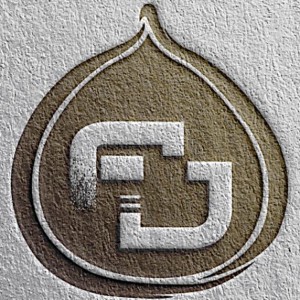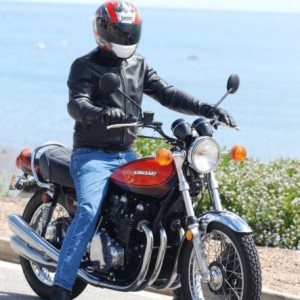This site contains affiliate links for which I may be compensated.
Dattero
Dattero Information


-
Possible Synonyms / AKA:
Donicale of Pistoia, Bezzoso of Lunigiana, Cortese of Liguria, Coasca of Riviera di Ponente, Vezzoso at Piacentino, Rolandine, Rolandine Blanche, Briasca of Grasse, Blanchette, Ficus carica rolandina Risso, Ficus polymorpha var. elegans Gasparrini
-
Introduced By:
-
Origin:
-
Main Flavor Group:
-
Family Group:
-
Fig Type:
Common - Self fertile and will grow anywhere conditions are suitable -
Cold Hardy:
N/A -
Container Variety:
N/A -
Easy Rooting:
N/A -
Main Season:
any -
Availability:
N/A -
Breba Crop:
N/A -
Seed Crunch:
N/A -
Eye:
N/A -
Skin Toughness:
N/A -
Fruit Size:
N/A -
Rain Resistance:
N/A -
Tree Vigor:
N/A -
External Links:
Description
Condit Monograph
Dattero (syns. Donicale of Pistoia, Bezzoso of Lunigiana, Cortese of Liguria, Coasca of Riviera di Ponente, Vezzoso at Piacentino-all according to Gallesio; Rolandine, Rolandine Blanche, Briasca of Grasse, Blanchette, Ficus carica rolandina Risso, Ficus polymorpha var. elegans Gasparrini). Described by Gallesio (1817), Gasparrini (1845), Roda (1881), and Mingioli (1904), as Dattero. Described by Risso (1826), Sauvaigo (1889, 1894), Eisen (1901), Trabut (1904), Bois (1928), Bun (1942), Simonet et al. (1945, with illustration of fruit), and Evreinoff (1947), as Rolandine or Rolandina. Described by Baldini (1953) as Donicale, with Verdiccio Gentile as a synonym. Illustration of leaf and fruit by Baldini.
According to Eisen, Dattero is the same as Dottato. The accounts of Dattero by Gallesio, and of Rolandine by Eisen, Risso, Sauvaigo, and Simonet, however, agree that this is a one-crop variety, and that the skin color of the figs is green, tinged with rose.
On the other hand, Dottato trees bear two crops, and the figs are yellowish green in color. Dattero is, therefore, treated here as a distinct variety, and Rolandine as identical with it. Authorities also agree that it is an excellent fig, especially for drying, along the Italian Riviera and in southern France. It seems not to have been tested in California, at least under the names listed. P.I. No. 102,020, introduced from Morocco as Rolandine in 1933 and fruited at Riverside, proved to be identical with Archipel (Osborn's Prolific) - a different fig from the variety under consideration here. The following account is based on those of Simonet et al. and Baldini.
Leaves mostly 5-lobed; base shallowly cordate.
Breba crop none. Second-crop figs medium, up to 2 inches long and 1-1/2 inches in diameter; average weight 32 grams; shape obovate to pyriform; neck not prominent, or entirely missing; stalk short; ribs not much in evidence; eye small, closed, scales pink; skin checking at maturity; color yellowish green, tinged with violet; pulp light rose, somewhat hollow; seeds small, few. Quality very good, especially for drying.
Dattero (syns. Donicale of Pistoia, Bezzoso of Lunigiana, Cortese of Liguria, Coasca of Riviera di Ponente, Vezzoso at Piacentino-all according to Gallesio; Rolandine, Rolandine Blanche, Briasca of Grasse, Blanchette, Ficus carica rolandina Risso, Ficus polymorpha var. elegans Gasparrini). Described by Gallesio (1817), Gasparrini (1845), Roda (1881), and Mingioli (1904), as Dattero. Described by Risso (1826), Sauvaigo (1889, 1894), Eisen (1901), Trabut (1904), Bois (1928), Bun (1942), Simonet et al. (1945, with illustration of fruit), and Evreinoff (1947), as Rolandine or Rolandina. Described by Baldini (1953) as Donicale, with Verdiccio Gentile as a synonym. Illustration of leaf and fruit by Baldini.
According to Eisen, Dattero is the same as Dottato. The accounts of Dattero by Gallesio, and of Rolandine by Eisen, Risso, Sauvaigo, and Simonet, however, agree that this is a one-crop variety, and that the skin color of the figs is green, tinged with rose.
On the other hand, Dottato trees bear two crops, and the figs are yellowish green in color. Dattero is, therefore, treated here as a distinct variety, and Rolandine as identical with it. Authorities also agree that it is an excellent fig, especially for drying, along the Italian Riviera and in southern France. It seems not to have been tested in California, at least under the names listed. P.I. No. 102,020, introduced from Morocco as Rolandine in 1933 and fruited at Riverside, proved to be identical with Archipel (Osborn's Prolific) - a different fig from the variety under consideration here. The following account is based on those of Simonet et al. and Baldini.
Leaves mostly 5-lobed; base shallowly cordate.
Breba crop none. Second-crop figs medium, up to 2 inches long and 1-1/2 inches in diameter; average weight 32 grams; shape obovate to pyriform; neck not prominent, or entirely missing; stalk short; ribs not much in evidence; eye small, closed, scales pink; skin checking at maturity; color yellowish green, tinged with violet; pulp light rose, somewhat hollow; seeds small, few. Quality very good, especially for drying.
If you'd like your banner to be shown here and throughout Fig Database, send us a message.
Photos Add Your Image
No Images Found
YouTube Videos
No Videos Found









